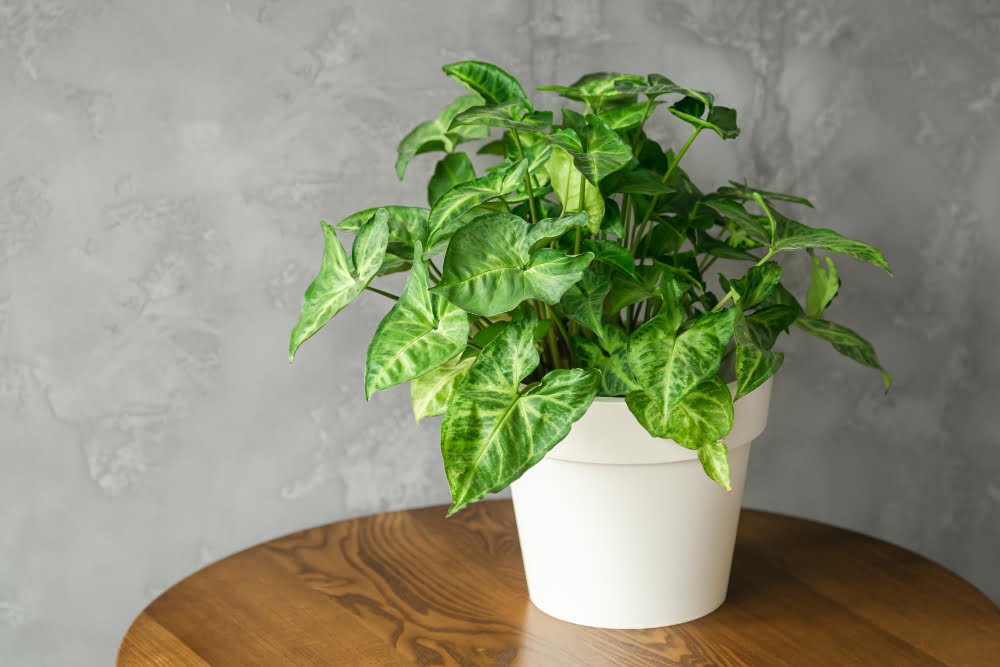Introduction
The Pothos Epipremnum aureum plant, often celebrated for its versatility and hardiness, stands as a delightful addition to any indoor setting. With cascading vines and stunning heart-shaped leaves, it’s no wonder they’ve been a beloved choice among plant enthusiasts, novices and experts alike. In this review, we will delve deep into the world of Pothos, shedding light on its care needs, the different varieties available, and how you can get the most out of this magnificent plant.
Pothos Epipremnum aureum Indoor Plant Details
| Specification | Details |
|---|---|
| Common Names | Devil’s Ivy, Golden Pothos, Money Plant |
| Botanical Name | Epipremnum aureum |
| Family | Araceae |
| Plant Type | Evergreen vine |
| Mature Size | Up to 10 feet indoors (can grow much longer in its natural environment) |
| Sun Exposure | Low to bright indirect light |
| Soil Type | Well-draining potting mix |
| Soil pH | 6.1 to 6.5 (slightly acidic) |
| Bloom Time | Rarely blooms indoors |
| Flower Color | N/A (Greenish-white when it does bloom, but it’s uncommon indoors) |
| Hardiness Zones | 10 to 12 |
| Native Area | Solomon Islands |
These specifications provide a concise overview of the Pothos plant’s characteristics and care requirements. It’s clear why this plant is a favorite among indoor gardeners—its versatility and adaptability make it suitable for various conditions, and its aesthetic appeal is undeniable
Pothos Epipremnum aureum Care
When you bring home a Pothos plant, you’re essentially inviting a low-maintenance friend into your living space. These plants are often touted as “hard to kill,” making them perfect for those who might not have the proverbial green thumb. Its resilience stems from its adaptability. Even if neglected for a while, Pothos demonstrates a remarkable ability to bounce back.
Light
Pothos is incredibly forgiving when it comes to light. While they thrive in medium to bright indirect light, they’re also known to adapt to low light conditions. However, if you notice the color of your Pothos fading, it might be craving more sunlight. Rotate your plant every few weeks to ensure even growth and exposure.
Soil
When it comes to soil, Pothos isn’t overly picky. A well-draining potting mix will suffice. Ensure the pot has adequate drainage holes to prevent root rot, a common issue with this plant if overwatered.
Water
Watering is where many plant enthusiasts go wrong. Pothos prefers to dry out between watering. When you do water, ensure it’s thorough, allowing excess water to drain. Overwatering can lead to root rot, so it’s crucial to maintain a balance. The drooping of leaves can be a tell-tale sign that your plant thirsts for water.
Temperature and Humidity
Pothos flourishes in temperatures ranging from 60-80°F. Avoid placing your plant near drafty windows or vents. As for humidity, while they appreciate moist environments, they’re adaptive to most indoor humidity levels.
Fertilizer
Fertilizing your Pothos can boost its growth. However, it’s not a stringent requirement. If you choose to fertilize, opt for a balanced, water-soluble fertilizer during the growing months of spring and summer. Reduce or skip fertilization in the dormant winter months.
Types of Pothos (Epipremnum aureum) Plant
There are several Pothos varieties, each boasting unique leaf patterns. Popular ones include Golden Pothos, Marble Queen, and Neon Pothos. Each variant carries its distinctive charm, making the Pothos family diverse and aesthetically pleasing.
Pruning
Regular pruning can invigorate your Pothos and promote fuller growth. By trimming long tendrils, you not only shape your plant but also encourage new growth from the cut sites.
Propagating Pothos (Epipremnum aureum) Plants
Propagating Pothos is a straightforward affair. Cut a 4-6 inch segment right below a node and place it in water. In a few weeks, roots should start emerging, ready for potting.
Overwintering
Although Pothos is a tropical plant, it adjusts well to average indoor temperatures. If you notice slowed growth during winter, don’t fret; it’s just the plant’s way of conserving energy.
Common Pests & Plant Diseases
Pothos, like all plants, can fall victim to pests like spider mites and aphids. Regularly check the underside of leaves and act promptly if you spot any invaders. Neem oil works wonders as a natural repellent.
How to Get Spider Plant to Bloom
(Note: This point seems unrelated to Pothos, so I’ll briefly touch on it.) While Pothos doesn’t bloom indoors, Spider Plants do. For them, ensure adequate light, avoid over-fertilizing, and maintain a cooler temperature to potentially see flowers.
Common Problems With Pothos (Epipremnum aureum) Plant
Yellowing leaves could mean overwatering, while brown spots might indicate a fungal infection. Luckily, Pothos is robust, and addressing the issue early can often revive your plant.
Quickly Declining
A rapidly declining Pothos is a rare sight but not impossible. This might be due to extreme factors like overwatering, pest infestation, or exposure to sudden temperature changes.
Final Thoughts: Pothos Glory
Pothos, with its undemanding nature, offers both beauty and resilience. By providing the basic care highlighted in this review, your Pothos will not only survive but thrive, gracing your living space with its luscious green presence.
Frequently Asked Questions
- How often should I water my Pothos?
Typically, water when the top inch of soil feels dry to touch.
- How often should I water my Pothos?
- Can Pothos thrive in artificial light?
Yes, Pothos adapts well to fluorescent lighting, making it an office favorite.
- Can Pothos thrive in artificial light?
- Is Pothos toxic to pets?
Yes, they can be toxic if ingested. Always place them out of pets’ reach.
- Is Pothos toxic to pets?
This review paints Pothos in a deservedly positive light. With minimal care, the plant rewards with beautiful foliage and robust growth. Truly, Pothos is a gem in the world of indoor plants.











